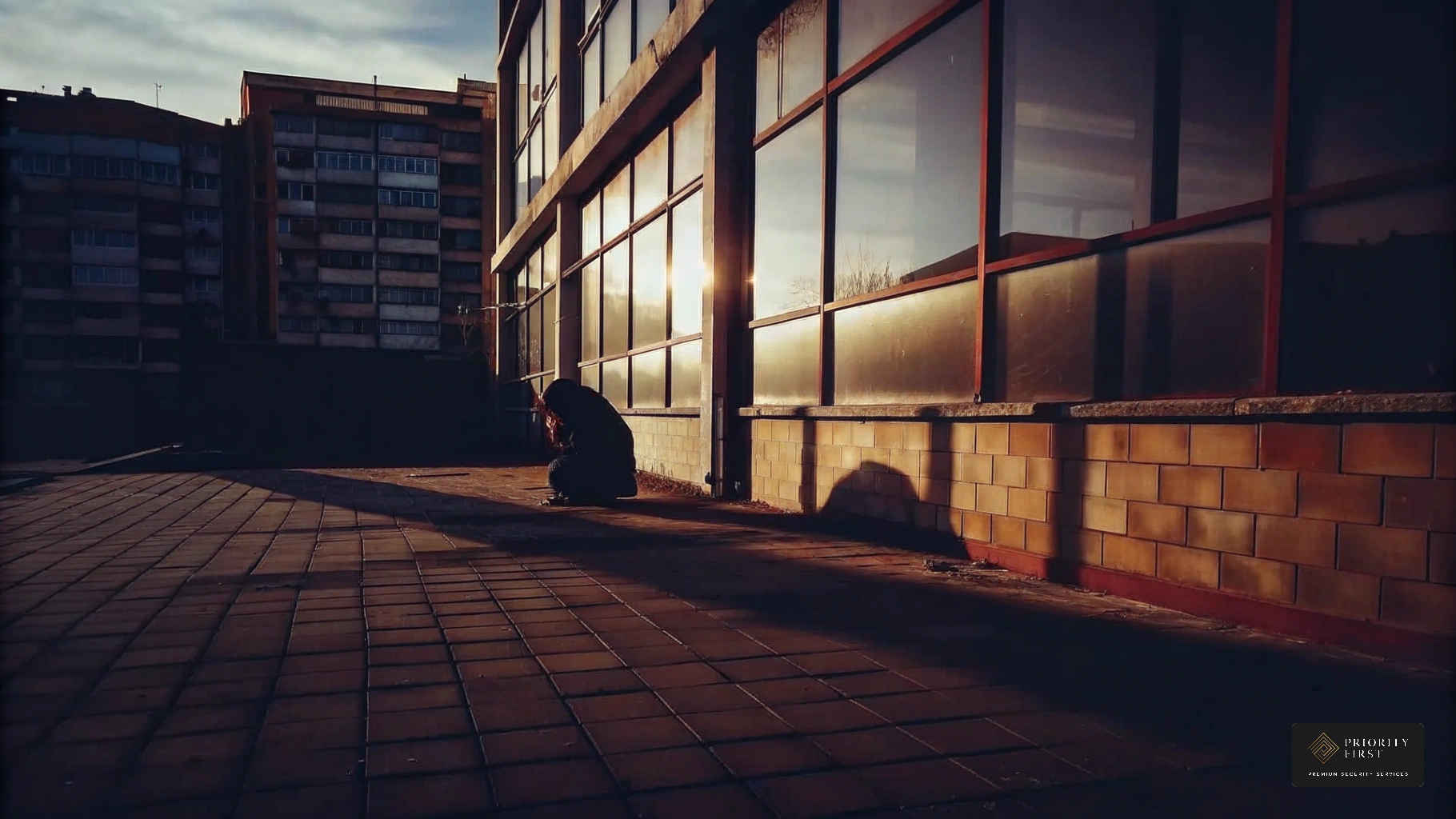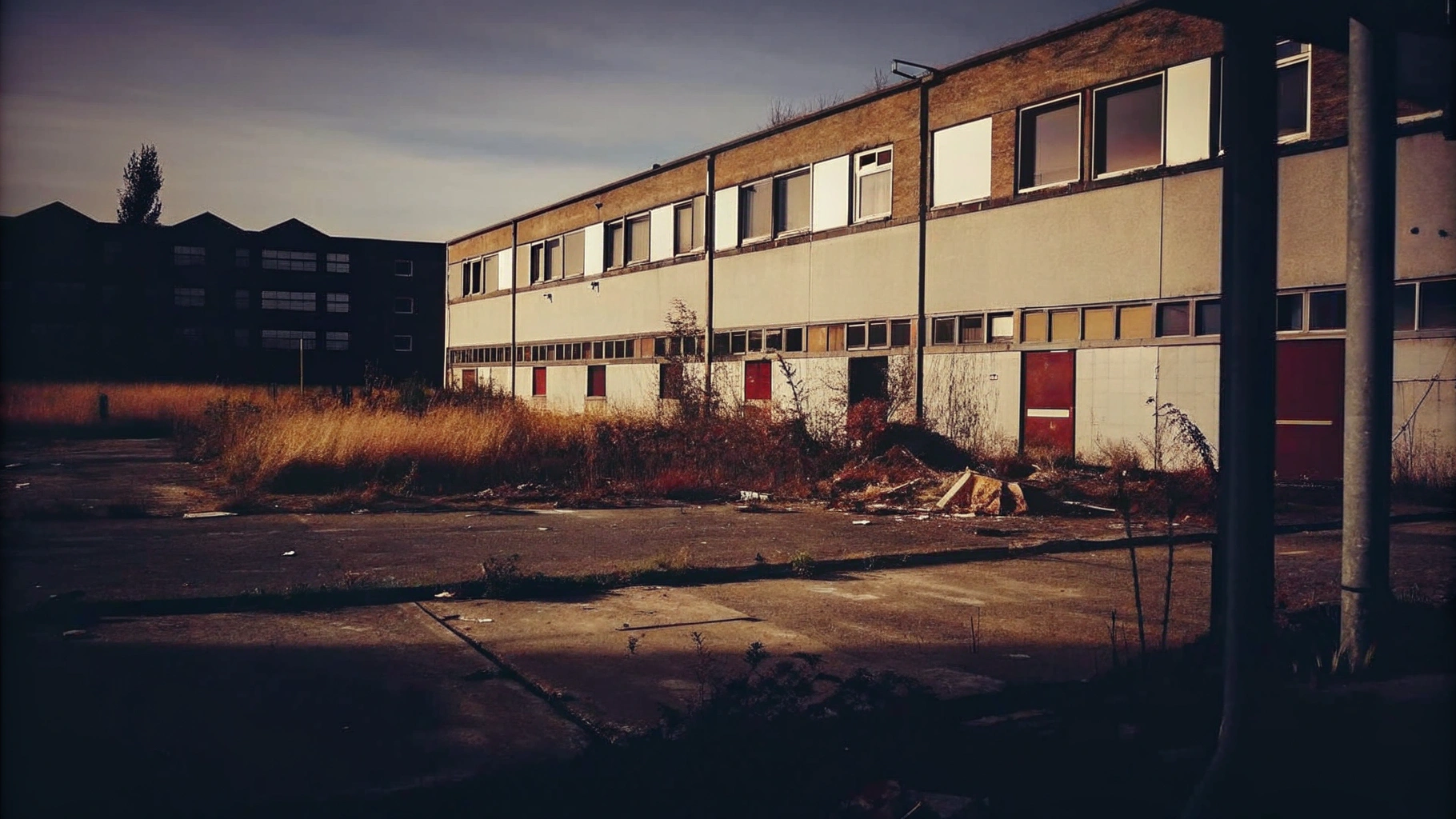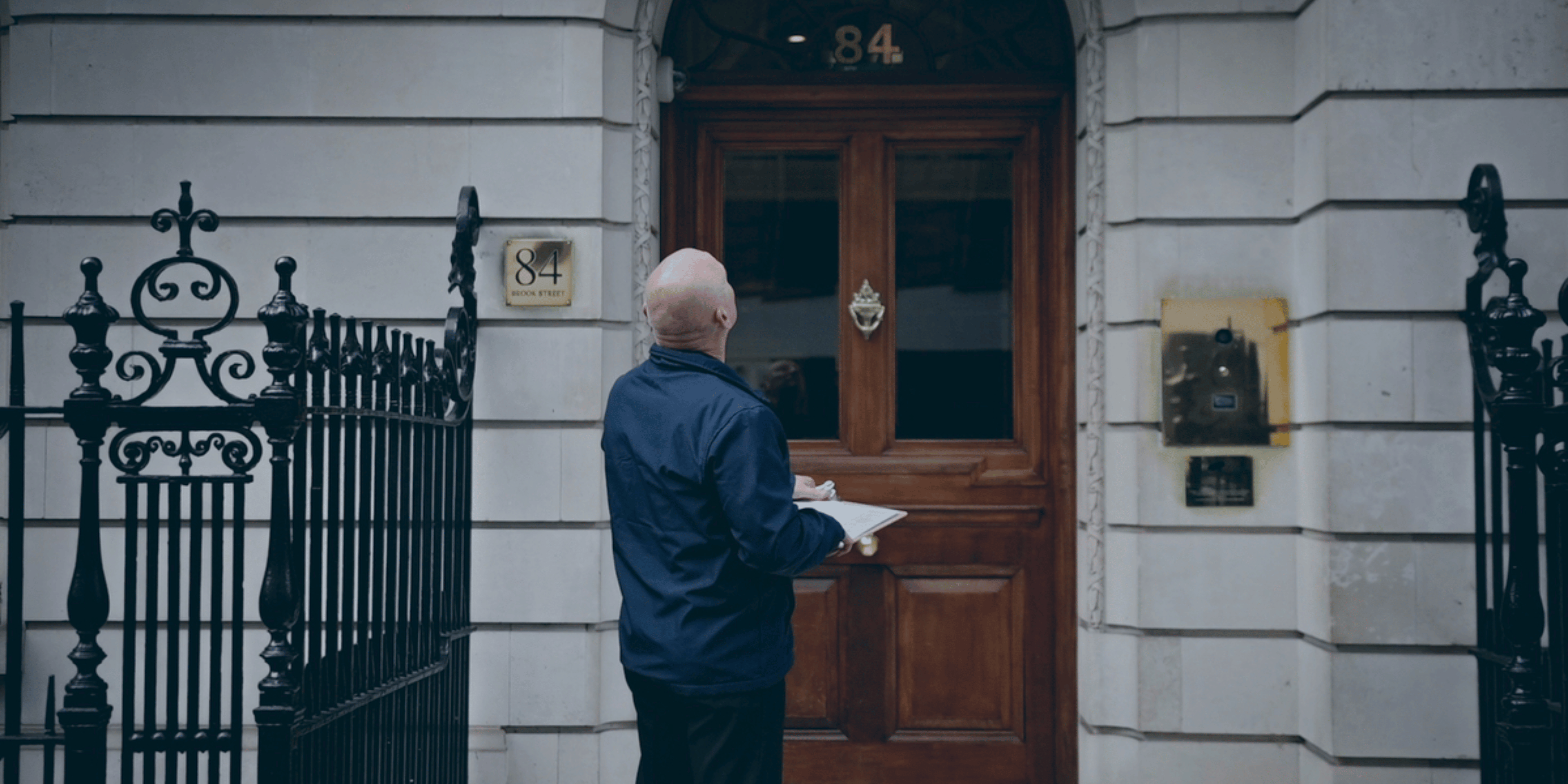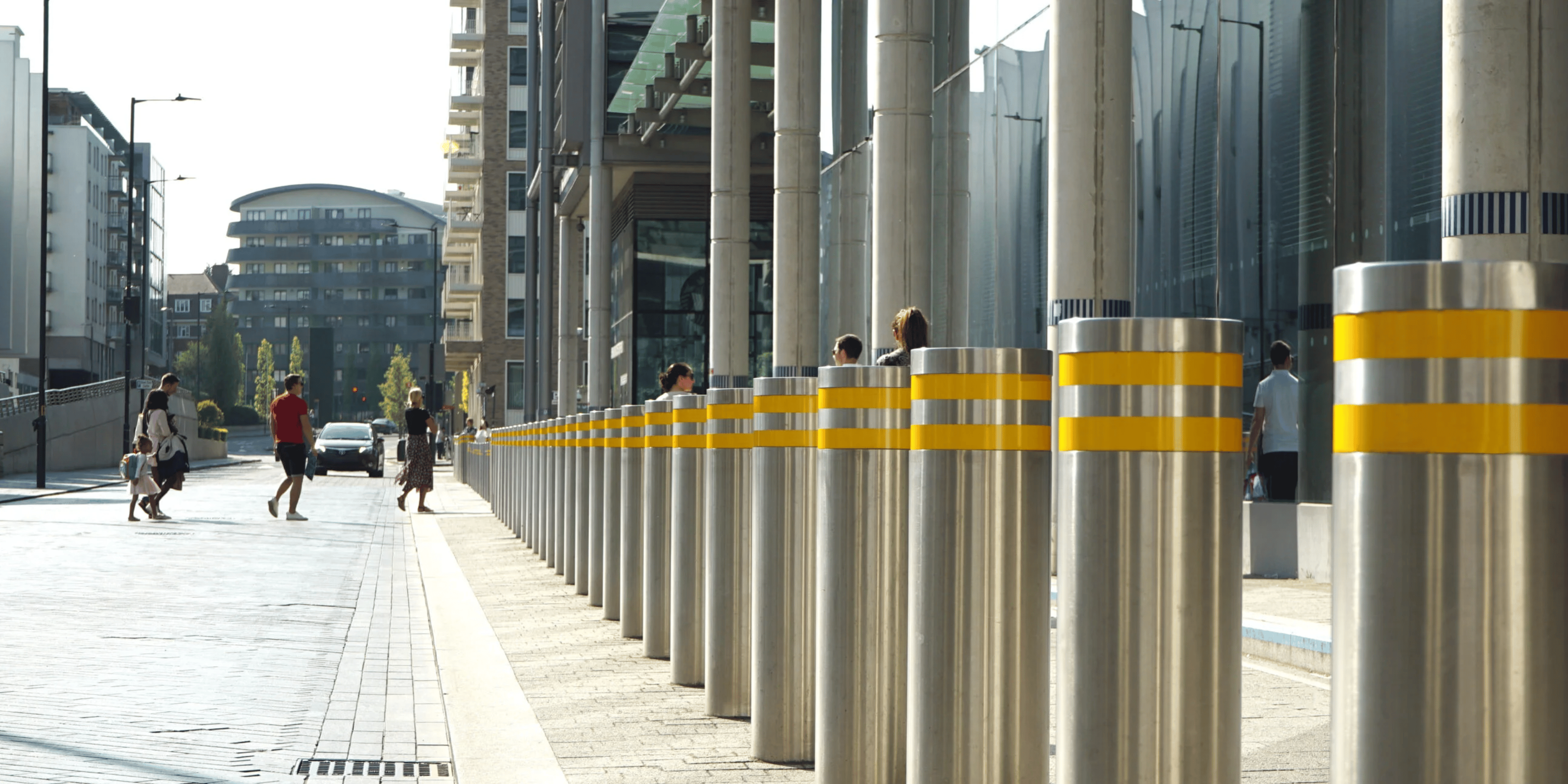
Secure Vacant Property: Essential Steps for Construction Managers

Overview
To secure vacant property effectively, construction managers must implement a combination of physical barriers, surveillance systems, and regular security assessments. This approach mitigates risks such as theft, vandalism, and fire hazards. The reality is that proactive measures—such as robust fencing, CCTV monitoring, and routine evaluations—are essential in significantly reducing vulnerabilities. Ignoring these risks can lead to substantial financial losses, operational disruptions, and reputational damage. Therefore, it is crucial to adopt a comprehensive security strategy that safeguards unoccupied sites, demonstrating the value of early investment in security to prevent greater losses later.
Introduction
Empty buildings frequently attract criminal activity, which exposes their owners to significant financial risks and safety concerns. For construction managers, understanding and addressing the vulnerabilities of vacant properties is not merely good practise; it is essential for safeguarding investments and ensuring compliance with insurance requirements. The reality is that with the increasing sophistication of threats—from theft and vandalism to environmental hazards—managers must consider how to effectively secure these properties. This article explores critical steps and best practises for protecting vacant construction sites, offering valuable insights that can help mitigate risks and preserve asset value.
Understand Vacant Property Vulnerabilities
Empty buildings frequently serve as prime targets for criminal activity due to their lack of regular supervision. The vulnerabilities inherent in these properties include:
- Theft and Vandalism: Unmonitored properties attract thieves seeking valuable materials, such as copper wiring and equipment. The economic impact of metal theft alone costs the UK approximately £770 million annually. Vandalism can also occur, leading to costly repairs and further financial strain. Priority First offers manned guarding and CCTV surveillance to effectively deter such activities.
- Squatting: Vacant structures may become inhabited by squatters, resulting in legal issues and potential harm to the asset. This situation incurs costs for eviction and can lead to extensive repairs. Our alarm response services can swiftly address unauthorised access.
- Fire Hazards: The Home Office reports an alarming average of 60 fires daily in or near empty structures. Without frequent evaluations, , threatening nearby properties and resulting in substantial financial losses. Priority First’s routine site evaluations can help identify and mitigate these hazards.
- Environmental Damage: Neglected sites can suffer from weather-related harm, such as water intrusion or pest invasions. In the fiscal year 2020-21, local councils spent almost £50 million removing dumped waste, highlighting the environmental risks associated with unmonitored sites. Our comprehensive site monitoring services can help prevent such issues.
To effectively secure vacant property, construction managers must conduct a thorough evaluation of these vulnerabilities, considering the specific context of their site and the potential risks involved. Priority First’s customised management and consulting services can assist in this regard, providing detailed building evaluations and assessments to identify weaknesses and suggest tailored solutions. Implementing proactive protective strategies, such as regular inspections and advanced surveillance systems, can significantly reduce these risks and safeguard investments.

Implement Effective Security Measures
To effectively focus on , construction managers must implement a combination of physical and technological security measures.
- Physical Barriers: Robust fencing, gates, and security screens are essential in deterring unauthorised access. High-quality locks should secure all entry points, establishing a formidable first line of defence against intruders. Additionally, defensive planting, such as thorny shrubs, can enhance safety by complicating access to windows and doors. Incorporating Hostile Vehicle Mitigation (HVM) strategies, like reinforced barriers, further prevents vehicles from accessing vulnerable areas.
- Surveillance Systems: The deployment of CCTV cameras equipped with motion detection capabilities allows for continuous monitoring of the property. Integrating AI-powered systems enhances this capability by providing real-time threat detection, significantly reducing response times to potential incidents. As noted by GA Security, visible protective measures like CCTV and signage deter criminal activity, making them essential components of any protection strategy. Moreover, Priority First specialises in integrating CCTV monitoring with existing systems, ensuring comprehensive surveillance coverage.
- Lighting: Adequate perimeter lighting plays a crucial role in deterring criminal activity. Motion-sensor lights not only improve visibility during nighttime but also create the impression of occupancy, which can discourage trespassers.
- Regular Patrols: Employing security personnel for regular patrols ensures that any suspicious activity is promptly addressed. This proactive strategy can significantly diminish the likelihood of vandalism and theft, as demonstrated by successful implementations at various construction sites. Regular inspections are also vital for maintaining property condition and mitigating risks. Priority First’s corporate protection teams are trained to assess threats in real time, providing an additional layer of safeguarding.
- Alarm Systems: The installation of alarm systems that notify guards or local authorities in case of unauthorised access or emergencies is crucial. These systems can be combined with smart technology to provide instant notifications, thereby enhancing overall safety.
By merging these approaches, construction supervisors can develop a comprehensive safety plan that effectively addresses the unique challenges posed by securing vacant property sites. Notably, assets that adopted protective strategies have been successfully rented within three months, underscoring the tangible benefits of these measures. Furthermore, with 1 in every 25 residences in the UK reported to be unoccupied, the necessity for effective protective measures is clear.

Conduct Regular Security Assessments
Performing routine safety evaluations is essential for securing vacant property. The reality is that security challenges in the UK are often underestimated, yet they pose significant risks to property owners. Establishing a routine for security assessments—ideally on a monthly or quarterly basis, depending on the property's risk level—can mitigate potential threats and is frequently a requirement for insurance coverage.
Assessing the effectiveness of current protective strategies is critical. This includes examining fencing, surveillance systems, and alarm responses. Properties with comprehensive security measures, such as those offered by Priority First, can deter up to 90% of potential crimes. Therefore, identifying vulnerabilities and areas for improvement is paramount.
Moreover, it is vital to stay informed about new threats that may arise from changes in the surrounding environment, such as increased crime rates or nearby construction activities. Routine evaluations should be formalised and documented to ensure that security measures remain valid and effective. Securing vacant property involves addressing common risks such as theft, vandalism, and unauthorised occupation, which can significantly diminish their value.
Engaging with local authorities and community organisations can provide valuable insights into potential threats and best practises for property protection. This collaboration enhances the effectiveness of your security strategy, reinforcing the importance of a proactive approach.
Documenting findings from assessments is crucial. Keeping detailed records of identified vulnerabilities and the actions taken to address them is essential for insurance requirements and future planning. Ignoring protective protocols can lead to substantial financial losses, making comprehensive documentation even more vital.
By conducting regular evaluations, construction managers can ensure their protective measures remain effective and adaptable to emerging threats. This not only but also preserves the value of their assets. Priority First’s tailored security solutions, including manned guarding, CCTV surveillance, alarm response services, and 24/7 security, offer comprehensive protection against vandalism and theft, which is essential for securing vacant property until they are reoccupied.

Conclusion
Securing vacant properties is a critical responsibility for construction managers, given that these sites often face significant vulnerabilities leading to financial losses and legal complications. The reality is that unoccupied buildings are at risk of theft, vandalism, squatting, and fire hazards. By understanding these risks, construction managers can take proactive steps to protect their assets. Implementing a combination of:
- physical barriers
- advanced surveillance systems
- adequate lighting
- regular patrols
- alarm systems
creates a robust security framework that effectively deters criminal activity.
That said, conducting regular security assessments is essential to ensure that protective measures remain effective and responsive to evolving threats. By routinely evaluating security protocols and engaging with local authorities, construction managers can identify vulnerabilities and adapt their strategies accordingly. This ongoing vigilance not only safeguards investments but also preserves the overall value of the properties until they are ready for occupancy.
The lesson is clear: the significance of securing vacant properties cannot be overstated. With the potential risks posed by unmonitored sites, construction managers are encouraged to adopt comprehensive security measures and maintain a proactive approach. By prioritising the safety of these assets, they can mitigate risks, enhance property value, and ultimately contribute to a safer community. Taking action now will ensure that vacant properties are protected against potential threats, paving the way for successful future developments.
Frequently Asked Questions
What vulnerabilities do vacant properties have?
Vacant properties are vulnerable to theft and vandalism, squatting, fire hazards, and environmental damage due to a lack of regular supervision.
How does theft and vandalism affect vacant properties?
Unmonitored properties attract thieves looking for valuable materials, leading to significant economic losses, such as the £770 million annual cost of metal theft in the UK. Vandalism also incurs repair costs and financial strain.
What issues can arise from squatting in vacant buildings?
Squatting can lead to legal issues and potential harm to the property, resulting in eviction costs and extensive repairs.
What are the fire hazards associated with vacant properties?
The Home Office reports an average of 60 fires daily in or near empty structures. Without regular evaluations, fire hazards can increase, posing threats to nearby properties and leading to substantial financial losses.
How can environmental damage occur in neglected sites?
Neglected sites can suffer from weather-related damage, such as water intrusion and pest invasions. Local councils spent nearly £50 million in 2020-21 removing dumped waste, highlighting the environmental risks of unmonitored properties.
What services does Priority First offer to address these vulnerabilities?
Priority First provides manned guarding, CCTV surveillance, alarm response services, routine site evaluations, and comprehensive site monitoring to mitigate risks associated with vacant properties.
How can construction managers secure vacant properties?
Construction managers should conduct thorough evaluations of vulnerabilities, implement proactive protective strategies like regular inspections and advanced surveillance systems, and consider tailored solutions offered by management and consulting services.




